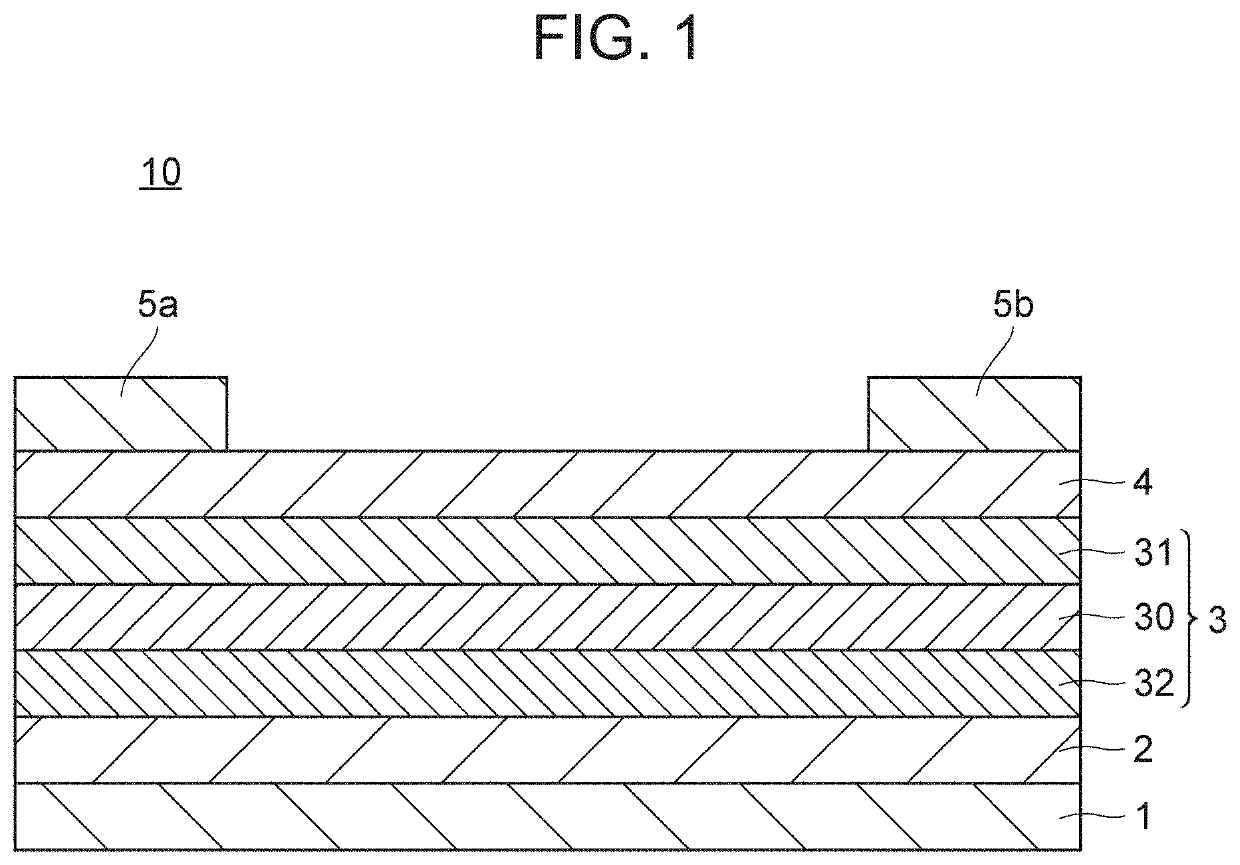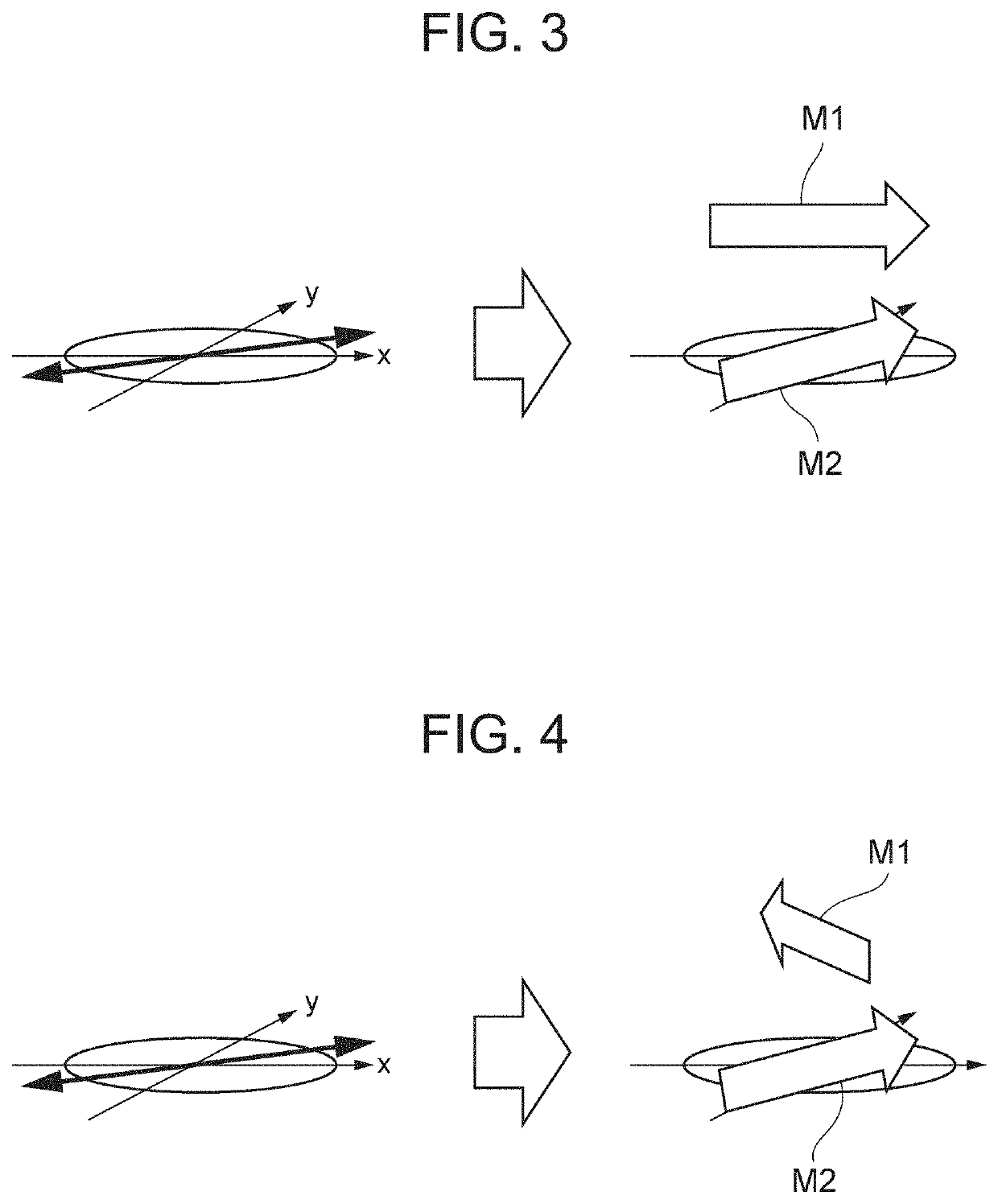Stress sensor
a stress sensor and sensor technology, applied in the field of stress sensors, can solve the problem of limited detection direction of stress, and achieve the effect of high magnetoresistance change rate and the possibility of manufacturing of highly sensitive sensors
- Summary
- Abstract
- Description
- Claims
- Application Information
AI Technical Summary
Benefits of technology
Problems solved by technology
Method used
Image
Examples
first preferred embodiment
[0024]FIG. 1 is a cross-sectional view of a stress sensor according to a first preferred embodiment of the present invention.
[0025]As illustrated in FIG. 1, a stress sensor 10 includes a substrate 1, a base layer 2 on the substrate 1, a stress detection layer 3 on the base layer 2, a protective layer 4 on the stress detection layer 3, and electrodes 5a, 5b on the protective layer 4.
[0026]The substrate 1 is preferably a resin substrate, and use of a flexible substrate having flexibility and elasticity may be applied to a sensor to sense the movement of a human body, and the like. As such a flexible substrate, for example, a substrate made of polyester, polycarbonate, or polyimide is preferably used.
[0027]The base layer 2 determines the crystal orientation of the stress detection layer 3, and improves the adhesion of magnetic layers in the stress detection layer 3 to the substrate 1, which may be any non-magnetic body. For example, the base layer 2 is preferably made of Pt, Cu, Ta, Au...
second preferred embodiment
[0043]In a second preferred embodiment of the present invention, a description of the matters common to the first preferred embodiment will be omitted, and only different points will be described. The cross-sectional view of the stress sensor according to the second preferred embodiment is as illustrated in FIG. 1.
[0044]In the second preferred embodiment, either one of the first magnetic layer 31 and the second magnetic layer 32 has a positive magnetoelastic coupling constant, and the other one has a negative magnetoelastic coupling constant. For example, the magnetoelastic coupling constant of the first magnetic layer 31 is preferably negative, and the magnetoelastic coupling constant of the second magnetic layer 32 is preferably positive. In other words, when a stress (strain) acts on the stress sensor 10, the magnetization direction of the first magnetic layer 31(B32 (B>0) is turned to be parallel or substantially parallel to the strain direction. It is preferable that the absolu...
third preferred embodiment
[0049]In a third preferred embodiment of the present invention, a description of the matters common to the first preferred embodiment will be omitted, and only different points will be described.
[0050]FIG. 5 is a schematic cross-sectional view of a stress sensor according to the third preferred embodiment. As illustrated in FIG. 5, electrodes 5a, 5b are provided on the sides of the stress detection layer 3 in the third preferred embodiment. The structure is the same or substantially the same as that in the first and second preferred embodiments, except for the arrangement of the electrodes 5a, 5b and that an insulator may be used as the protective layer 4. When the insulator is used as the protective layer 4, for example, silicon oxide, silicon nitride, aluminum oxide, or magnesium oxide may preferably be used.
[0051]The arrangement of the electrodes 5a, 5b illustrated in FIG. 5 may also detect the above-described giant magnetoresistance effect because an electric current eventually ...
PUM
| Property | Measurement | Unit |
|---|---|---|
| thickness | aaaaa | aaaaa |
| thickness | aaaaa | aaaaa |
| thickness | aaaaa | aaaaa |
Abstract
Description
Claims
Application Information
 Login to View More
Login to View More - R&D
- Intellectual Property
- Life Sciences
- Materials
- Tech Scout
- Unparalleled Data Quality
- Higher Quality Content
- 60% Fewer Hallucinations
Browse by: Latest US Patents, China's latest patents, Technical Efficacy Thesaurus, Application Domain, Technology Topic, Popular Technical Reports.
© 2025 PatSnap. All rights reserved.Legal|Privacy policy|Modern Slavery Act Transparency Statement|Sitemap|About US| Contact US: help@patsnap.com



